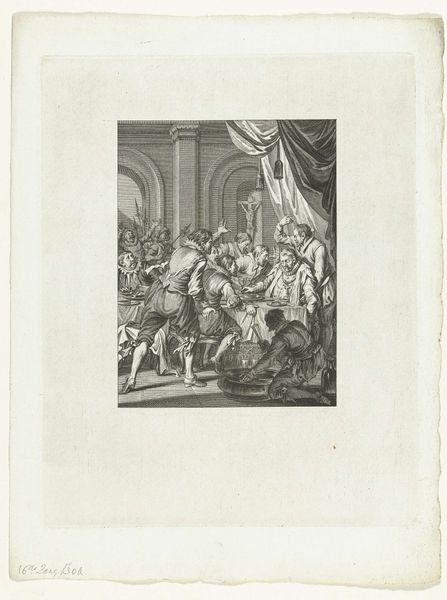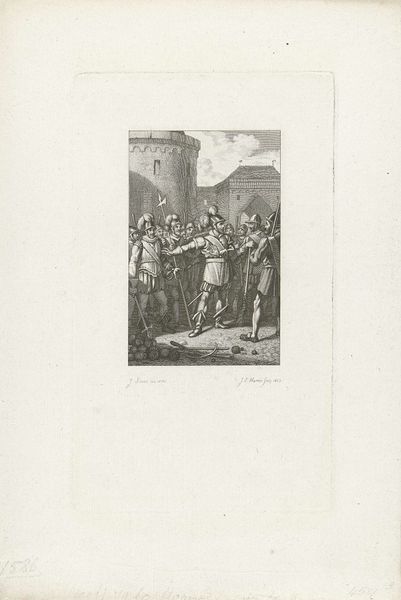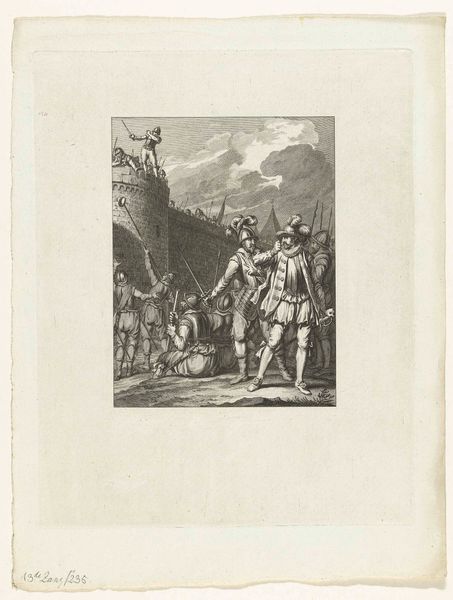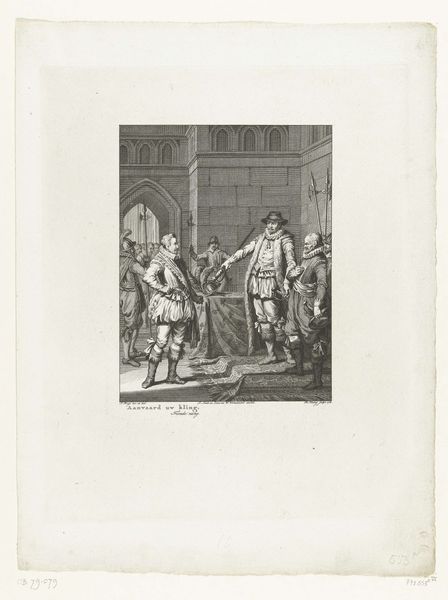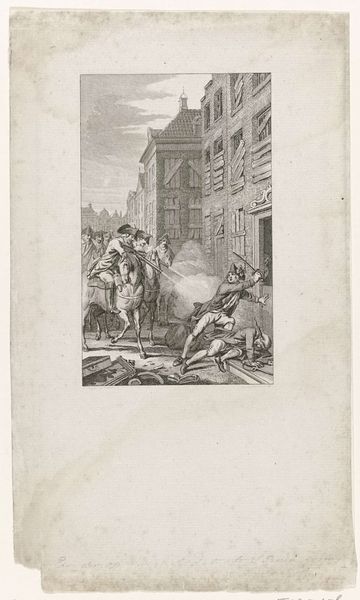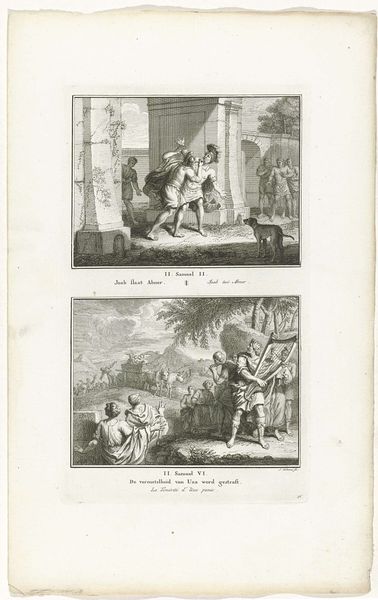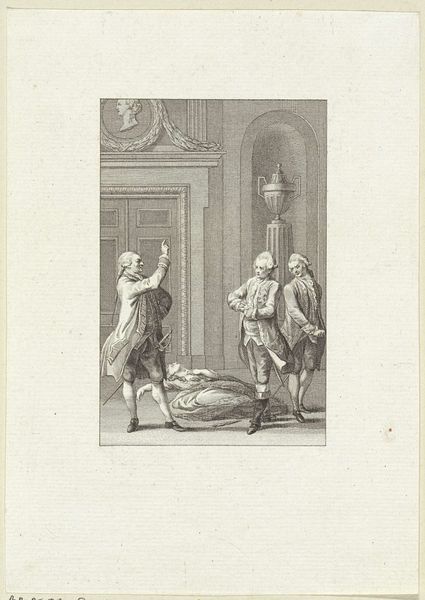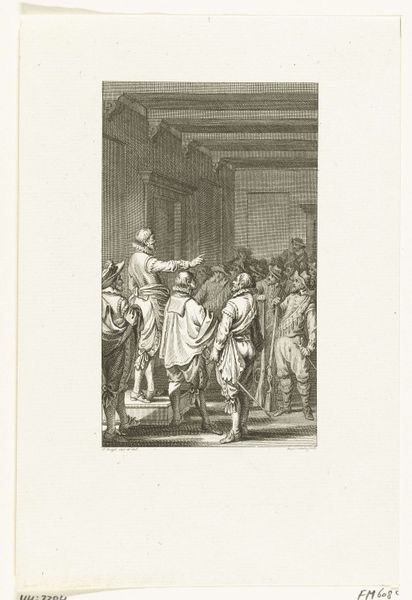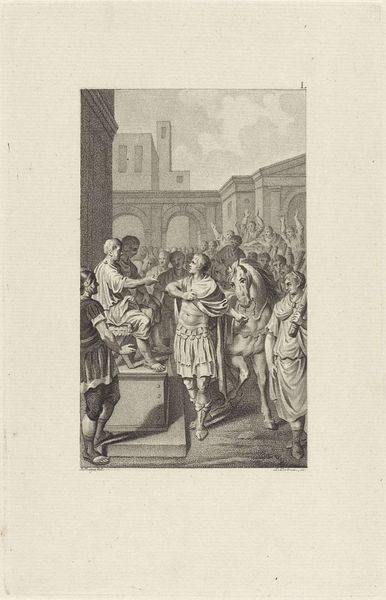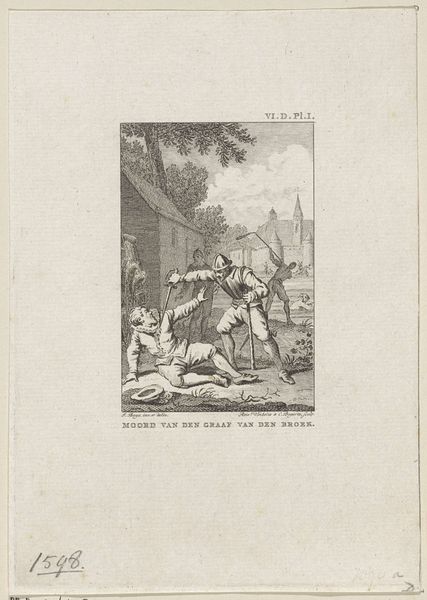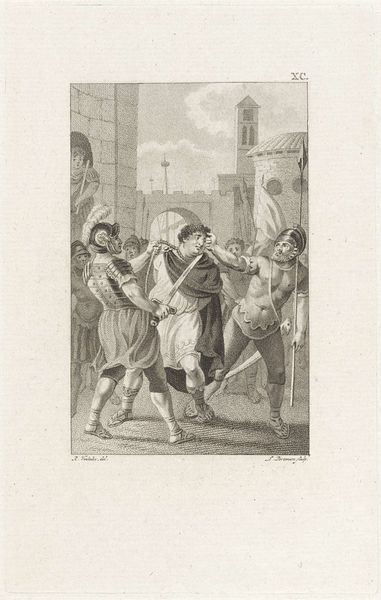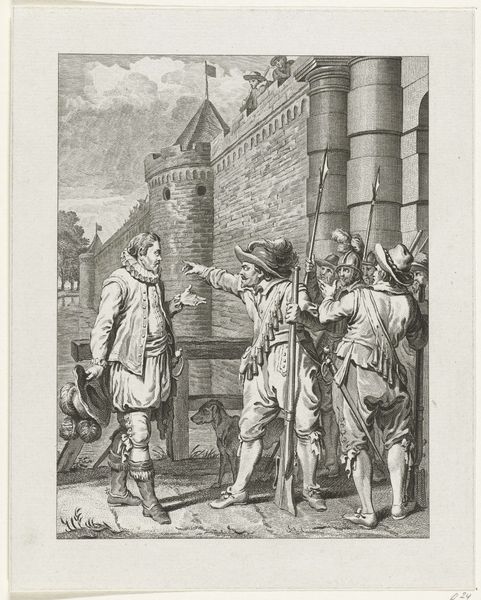
print, engraving
#
narrative-art
#
ink paper printed
# print
#
old engraving style
#
figuration
#
line
#
genre-painting
#
history-painting
#
academic-art
#
engraving
Dimensions: height 270 mm, width 215 mm
Copyright: Rijks Museum: Open Domain
Curator: Here we have a print titled “Oranje schenkt Goignies zijn zwaard, 1578” or “Orange Presents Goignies His Sword, 1578.” Theodoor Koning created this engraving in 1785. Editor: There’s a strange quiet drama to this. It's achromatic, with a very controlled application of ink, and it feels deliberate but somewhat distant, perhaps because of the linearity and repetition, an overall sense of precision in a time of revolution. Curator: That "quiet drama" arises from the cultural memory surrounding this event. The image depicts Prince William of Orange returning a sword to Goignies, a symbolic act after a potential disagreement or betrayal. This embodies themes of reconciliation and magnanimity central to Dutch national identity at the time. Editor: Precisely. And I'm wondering about the labour embedded in producing this image: the engraver’s skill translating a historical narrative onto paper through these meticulously etched lines. Prints like these were readily accessible; widely distributed and reproduced as means of imbuing political ideology onto the masses. The work challenges, in a sense, our present notion of art consumption because of that dissemination. Curator: Indeed. The symbolism goes deeper. The sword represents power and honor, returned as a gesture of trust. William’s stance exudes confidence and forgiveness, crucial virtues for a leader in a fledgling nation. Consider also that the narrative touches upon ideas of Dutch identity: who counts as “in” or “out” depending on where allegiance is positioned, and how complex that might be given ongoing conflicts. Editor: Look closely at the materiality itself – ink on paper, modest means that allowed for mass consumption of this image, driving specific political narrative. By focusing on materiality and the process, one might suggest this challenges more valorized modes of production – or rather democratizes and makes more broadly impactful narratives central to the ruling powers. The means became a crucial part of the propaganda and ideological transmission. Curator: Exactly, by connecting image with ideology. It highlights how leaders leverage symbols for political gain. By the late 18th century, artists were less commissioned than involved in a new art market. To me, this artwork reflects how visual elements build shared beliefs that influence public opinion. Editor: Fascinating – thank you for highlighting how it echoes the Dutch self-image constructed through readily consumed material forms! Curator: Thank you. I can appreciate the way you contextualized how this artwork served its original public.
Comments
No comments
Be the first to comment and join the conversation on the ultimate creative platform.
